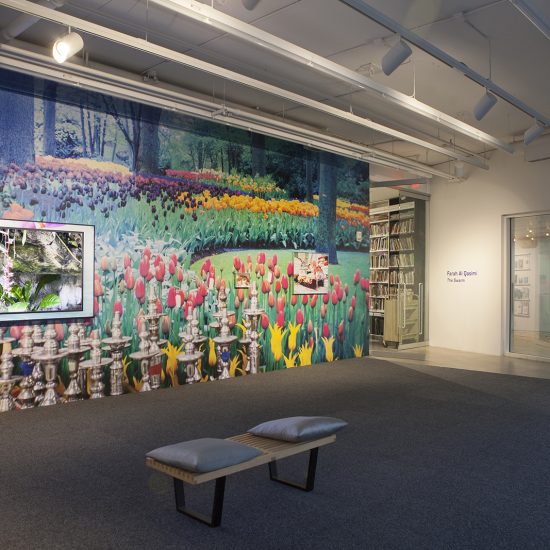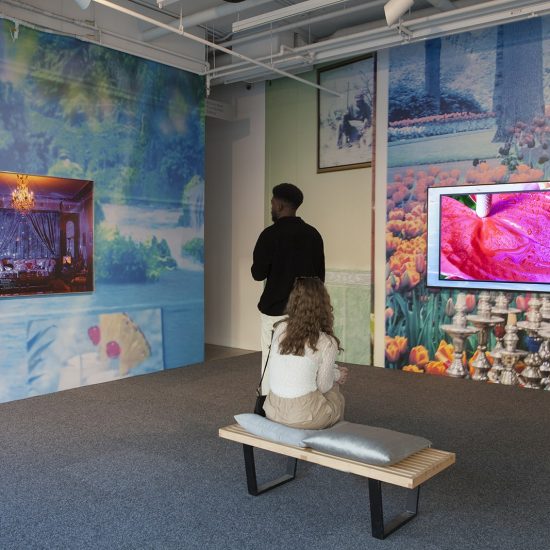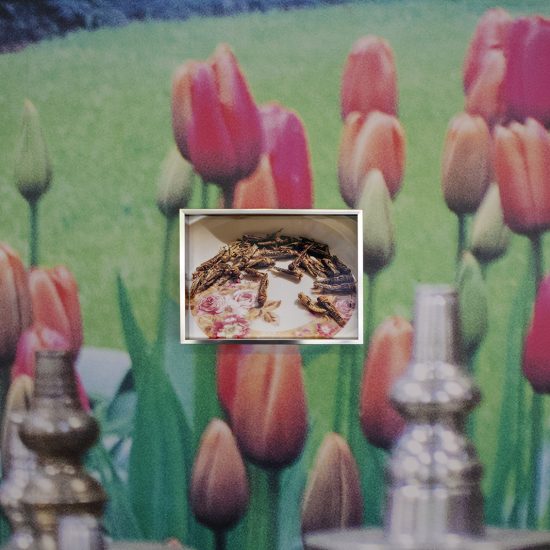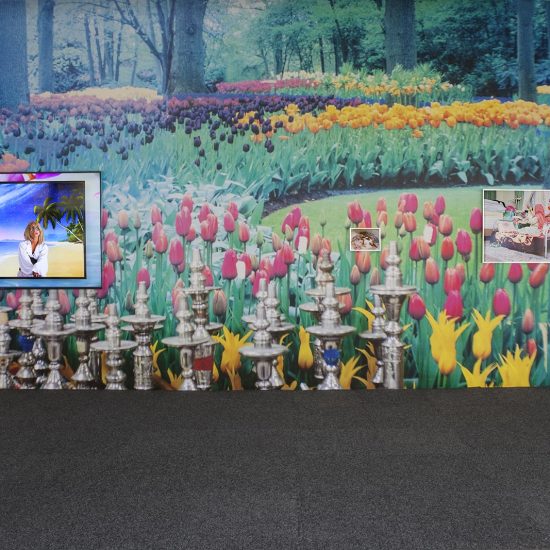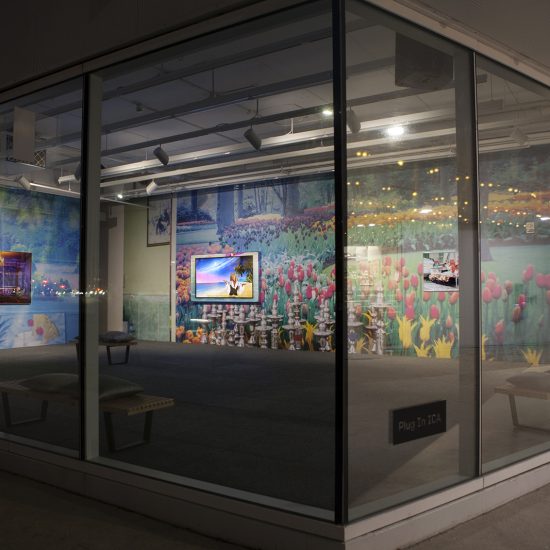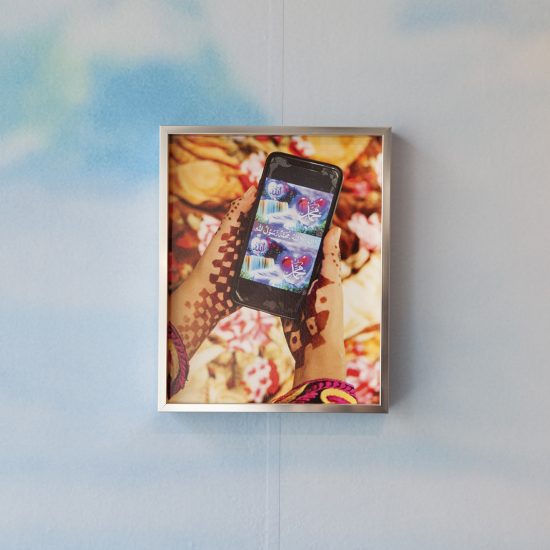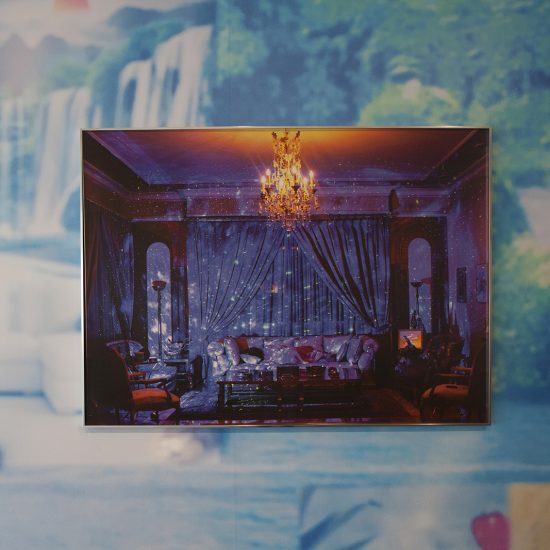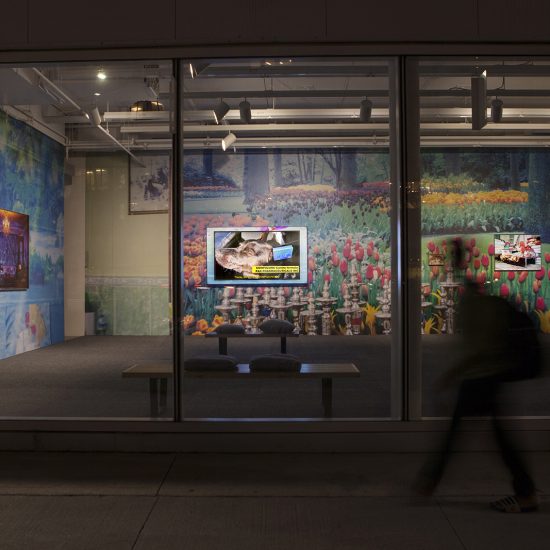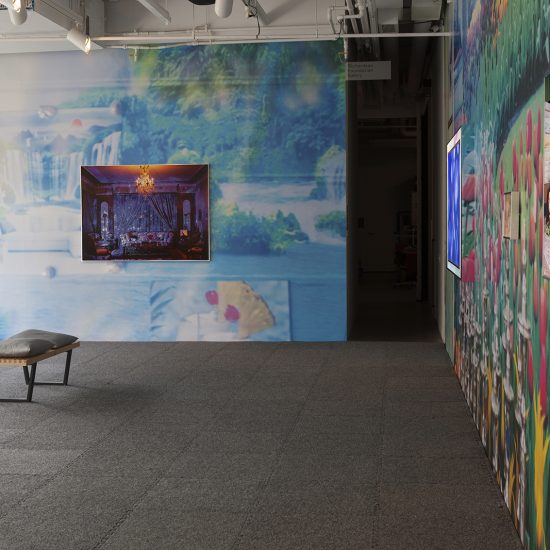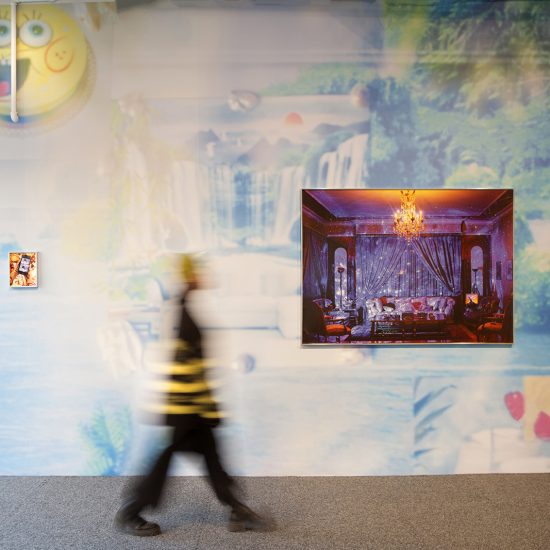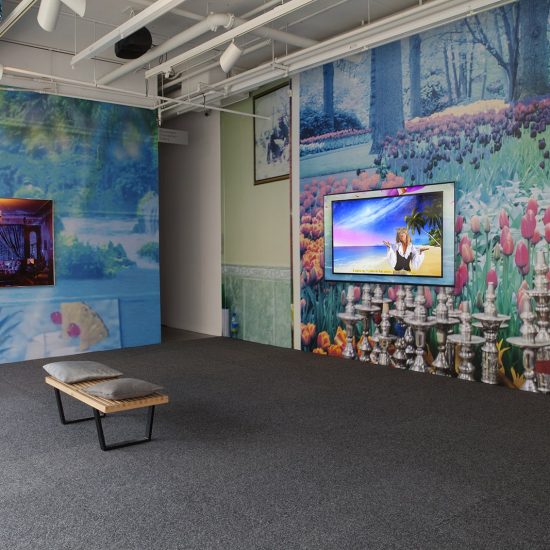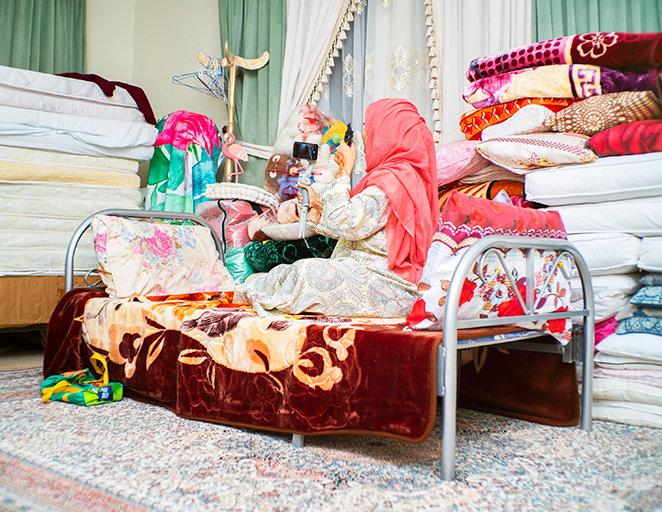
Plug In Institute of Contemporary Art is pleased to present:
The Swarm
A solo exhibition by Farah Al Qasimi
September 29, 2023 – January 13, 2024
Opening reception | Friday, September 29, 2023 | 7 – 10 pm
Plug In ICA is thrilled to announce The Swarm, an upcoming solo exhibition featuring Farah Al Qasimi opening September 29 – January 13, 2024.
We are very pleased to continue celebrating our over fifty years milestone by presenting two tandem solo exhibitions that offer crucial social, political, and historical reflections on the complex world of images in which we are all entangled one way or the other. Both artists are exhibiting in Winnipeg for the first time and they each broadly draw on the lives of objects and their intersections with the fickle nature of images.
Please join us on September 29 in our galleries, from 7 – 10 pm for an opening reception.
Although photography predominates Farah Al Qasimi’s practice, she also produces soundscapes along with filmic works where she’s often featured performing her own constructed characters. In her new exhibition titled The Swarm, audiences are invited into the enticing visual landscape that encompasses her work.
On a rudimentary level, Qasimi’s photography is rooted in a documentary-based practice. She is an Emirati born in Abu Dabi and splits her time between there and New York City. These places principally inform and are the subjects of her photographs. More extendedly, her work comes to include the Persian Gulf states and its diaspora in the West. Qasimi’s images often feature domestic interiors, seemingly innocuous objects, still lives, and occasionally visages of a figure. Glimpses of these along with a new video essay, can be seen superimposed against one of her characteristic wallpaper interventions in the exhibition. Although her photographs are rooted in a documentary practice in a broad sense, through her camera, the resultant images appear akin to cinema. They teem with effervescent colours, lighting design that gratify the eye, and compositional choices that gain a poetic wealth, keeping us transfixed. Through her images she makes a sensuous alchemy of the real world.
The Gulf region, although still relatively emerging, is a post-industrial society. The United Arab Emirates was only established in the 70s after years of British political control. The region’s accelerated growth is in part, a reaction to transcend its colonial past (and a post-911 symbolic subjugation and racial flattening) and into a longed-for future filled with limitless wealth. A significant part of this reaction is steeped in image, affect, and self-presentation. Qasimi’s work speaks to the hyper-affect and exuberance in these dreams of transcendence. If her photographs feel like a grand and ornately crafted version of reality, they are a reflection of the everyday spaces and surfaces she frequents. And, by extension, a reflection of the people and communities’ heightened sense of ornamentation, their social stratification, and their commodified fantasies. The notion of paradise is a common motif in Islam and popular culture in the Gulf. Aspiring for an oasis from a present condition is a prevailing interest in Qasimi’s work, and in the exhibition, we see semblances of this through her wallpaper. We are confronted with an Edenic field, in image form or, rather, a found one second-handedly depicted with a line of hookahs peeking through the bottom end of the image. The image is of an empty field of tulips. It resembles a stock image often used as default screensaver or could be an image of a postcard from some Dutch botanical garden. The colours are visibly saturated with the artificiality of a computer rendering. Considering images as unreliable narrators, the limits of the dreamy facade is made visible in Qasimi’s re-presentation. The scenic view is feigned by the graininess from the artist’s camera, the veritable seam and edges of the wallpaper, and the wall behind this patchy image of paradise. Qasimi extends this facile rendering of an oasis through her video essay also titled The Swarm.
The video begins with an Ali Express webpage for a wallpaper priced at 8 dollars. When the preview image is clicked on, we are taken into a video walkthrough of the wallpaper applied in a hypothetical space. Once in this space, our view slowly moves gradually toward another screen with a golden sunlight lit over a water body. Paused in front of this screen within our larger screen, the journey inside Qasimi’s hypnotically recursive video commences. Throughout, the video shows us the close-up view of the screen we landed on from the website while going through a narration by a voice who tells us they were stung by a venomous jellyfish while on a tropical getaway. The jellyfish recurs as a sort of symbolic protagonist. It can be considered as a symbol of nature’s relentless fight against human interference. In this case, as the narrator searches for escape through tourism. Part way through the video we are met with a pop-up product placement ad by a social media influencer. She’s dealing with the side-effects of a jellyfish bite from her snorkeling trip. However, she is now sponsored by a pharmaceutical company offering something that can take the edge off. It’s called Compzure: a quick and easy antidote to one’s unfavourable environment (and problems) in the form of a pill. The pill is synched up to an app that assists in transporting the user into a state of ‘recess’, as it’s described. There are control settings for the length the user desires to be lost in this altered state. Qasimi’s puppet-like character with pasted-on eyes and lips becomes a subject who overstays in an undersea hideout. They are fortified from the world outside as they sink deeper, dissolving into this alternate world where jellyfish are nicer and don’t bite. Tranquil sounds swirl and enhance the ambience of this undersea life. The puppet-like character narrates their experience the in recess:
I feel I exist outside the bounds of my skin
I feel alive but I don’t suffer
I am so big without my skin
This willful enmeshment with a fantastical environment is iterated in a photograph titled Star Machine as part of the installation. Although it could be mistaken for a staged set, like many of the domestic interiors in the artist’s work, this is found, an already highly adorned living room flooded with dazzling lights. It is a personally crafted, lived-in utopic enclave. As the eye slowly adjusts to the scene’s charm, a figure becomes noticeable. They are nestled on the sofa assimilated into the patterns and plenitude of the enveloping space.
The work in this exhibition explores the hunger for fantasy-making, and although there’s an awareness of it as the grand prize of capitalism, the transfixing allure to surrender into it is just as palpable. The artist is every bit as critical of this but isn’t distanced from it.
– Luther Konadu, curator | Plug In ICA
Farah Al Qasimi (b. 1991, Abu Dhabi, United Arab Emirates; lives and works in Brooklyn, NY) makes photographs, films and music. Often working with large-scale vinyl imagery and a multiplicity of photographic prints and screens, Farah is interested in the internet and its hierarchies of information and emotion. Farah also loves the complexity of storytelling and value-building in children’s cartoons, and many of her video works include primary narrators who are anthropomorphized. She has a highly collaborative practice and has worked with hand-sewn puppets, falcons, African Land Snails, exorcists, and most recently, a Jack Sparrow impersonator.
Acknowledgments
We are on Treaty 1 Territory. Plug In ICA is located on the territories of the Anishinaabeg, Cree, Oji-Cree, Dakota, and Dene peoples, and the National homeland of the Red River Métis. Our water is sourced from Shoal Lake 40 First Nation.
Plug In ICA extends our heartfelt gratitude to our generous donors, valued members, and dedicated volunteers. We acknowledge the sustaining support of our Director’s Circle. You all make a difference.
We gratefully acknowledge the support of the Canada Council, the Manitoba Arts Council and Winnipeg Arts Council. We could not operate without their continued financial investment and lobbying efforts.
Plug In ICA relies on community support to remain free and accessible to all, and enable us to continue to present excellent programs. Please consider becoming a member of Plug In ICA and a donor at https://plugin.org/support or by contacting Caitlin at caitlin@plugin.org
For more information on public programming and exhibitions contact Allison Yearwood at allison@plugin.org.
For general information, please contact: info@plugin.org or call 1.204.942.1043



